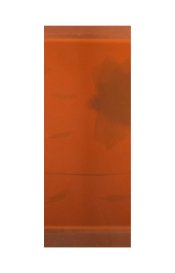In my experience film can have all kinds of curl when it is dry, but once it is fully soaked with water it is usually quite saggy. Therefore any effect of strong film curl would have to happen rather at the begin of your dev cycle. One part of your film pressing against the other, or restricting flow through some other means could only lead to less development, i.e. lower density.
If all my theories are bad and that restricted flow would somehow lead to density boost as observed by Wayne, then a simple prewash with tempered water should solve this issue for future rolls.
PS: on the slim chance that the extra density is not dye, but retained silver: have you tried reblixing that one film strip?
Rather than restricted flow, I was imagining more of a "turbulence effect" around the end of the roll, causing greater development on the second coil of film. Sort of like what some people get when developing sheet film in a tray the same size as the film, and the edges of the film are more dense. I don't think the film was touching itself, so it shouldn't have had restricted flow.








 It says to agitate 4 times per 30 seconds and I'm pretty sure in the past I've only been doing about one agitattion every 30 seconds, much like I do for B&W. So my agitation was much more frequent than usual.
It says to agitate 4 times per 30 seconds and I'm pretty sure in the past I've only been doing about one agitattion every 30 seconds, much like I do for B&W. So my agitation was much more frequent than usual.


